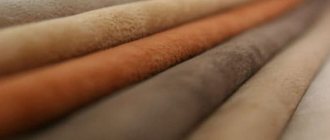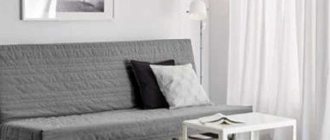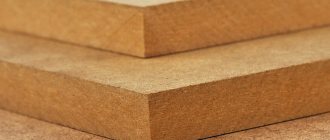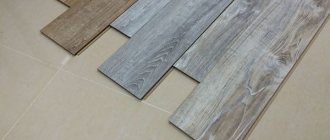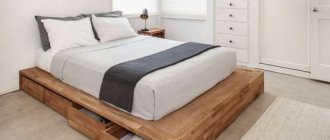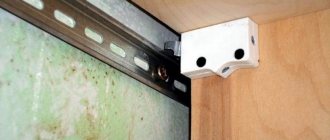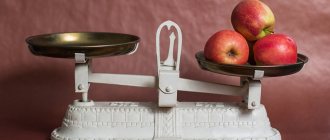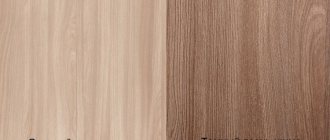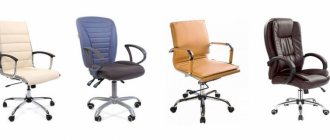The modern construction market offers a huge range of different materials, mixtures, and fittings intended for construction and repair. But no repair is complete without sheet materials that are used for finishing, and there are a great many of them. GVLV sheets are especially recognized as environmentally friendly and breathable. Their scope of application is significant. They cover walls and floors, make protective structures, use them as decorative finishing, and are allowed for renovation of premises in children's and medical institutions.
GVLV sheets are especially popular in repairs
What it is?
GVLV is a finishing sheet material, it is a rectangle. It is made on the basis of gypsum and contains cellulose for strengthening (reinforcement) and many additives. That is why gypsum fiber sheet is stronger than plasterboard, and thanks to additional additives, GVLV has increased moisture resistance and fire resistance. The material is environmentally friendly - this is its main advantage. It is divided into two types - simple GVL and moisture-resistant (GVLV). In terms of structure, gypsum fiber differs from gypsum plasterboard in that it does not have cardboard as an outer shell. During its manufacture, cellulose fibers are added and monolithic sheets are pressed. These fibers add reinforcing properties to the material, making it strong and durable. GVLV has increased sound and heat insulation.
Such sheets are moisture resistant and have a sound insulation function.
Composition and structure of gypsum plasterboard
A plasterboard sheet is a very simple design - a kind of sandwich made of thick cardboard, between which is laid a gypsum mixture with special additives to increase strength. This design provides the material with lightness, environmental friendliness, fairly high bending strength and thermal insulation properties.
To improve the quality characteristics of gypsum plasterboard, various components can be added to its composition.
Today, the following types of plasterboard sheets are distinguished:
Ordinary plasterboard sheets (GKL) . They are distinguished by gray cardboard color with blue markings. Used for finishing work in rooms with high and normal humidity.
Moisture-resistant drywall (GKLV). Drywall treated with a special impregnation, with antifungal compounds and waterproofing agents added to the gypsum mixture itself, is capable of not only absorbing 10 times less moisture than conventional gypsum plasterboards, but also quickly removes trapped moisture. Sheets of such drywall are green on both sides, marked in blue.
Fireproof plasterboard (GKLO). To increase resistance to open flames, plasterboard sheets are impregnated with special flame retardant substances, and in some cases crystallized water is added to the gypsum “filling” of the sheet in a special way. Such additives give the material high heat resistance - the limit of sheet resistance to open fire can be up to 60 minutes. GKLO sheets are pink, the markings are bright red.
Moisture-resistant drywall with increased fire resistance (GKLVO). Special water-repellent components and fire retardants allow the material to combine waterproof properties with the ability to withstand exposure to flame for a long time. The sheets are green with red markings.
Attention! Externally, GKLV and GKLVO slabs differ from each other only in markings, so when purchasing, you should make sure that you have chosen exactly the material that is required!
Specifications
A material such as gypsum fiber sheet can easily be hammered with nails and screws - it will not crumble, its strength is 1250 kg/m³. During production, it is treated with anti-chalking agents and sanded, which makes it moisture resistant. GVLV is hygroscopic, which means that it can absorb excess moisture and release it if the air is dry enough, but treating with a primer will not hurt.
This sheet is very strong; if you hammer a nail into it, it will not crumble.
The material is frost-resistant and resistant to deflection. Any tool designed for woodworking is suitable for it. Fireproof, has sound and heat insulation. The mass of the slabs is 39-43 kg, making the load on the main wall insignificant.
Such sheets are very strong and are not afraid of low temperatures
Advantages and disadvantages
Let's see what advantages gypsum fiber sheet has:
- Due to the equal distribution of cellulose, the material, in comparison with gypsum board, is very strong.
- GVLV sheets are fireproof; they do not burn in a fire, unlike plasterboard, the sheets of which crumble when the outer layers burn.
- Installation does not cause any difficulties.
- Gypsum fiber is used in any room, as it has excellent moisture resistance.
- Does not allow excess noise to enter the apartment.
- The material is so durable that it will not crumble if nails are driven into it and screws are screwed in; you can use ordinary tools to work with it.
- Can withstand significant sub-zero temperatures (freezing and thawing are 15 cycles, while drywall can only withstand 4 cycles).
- It harmonizes perfectly with various finishing materials.
Such sheets have a lot of advantages.
Of course, gypsum fiber has a lot of advantages, now let’s look at its disadvantages.
- In terms of weight, GVLV sheets are much heavier than drywall, as they are denser.
- High price equivalent.
- They cannot be used for structures where it is necessary to bend the material, because gypsum fiber is not flexible.
GVLV sheets are easy to install
Comparison of GVL with analogues
First, let's figure out what GVL is. It differs from standard drywall mainly in its manufacturing technology. If the sandwich principle is used in the production of plasterboard (that is, two layers of cardboard and a gypsum layer between them), then in the case of gypsum board, manufactured fibers are mixed into the gypsum mixture and pressed into the form of a sheet. This results in increased strength and excellent fire performance.
An analogue of GVL SML is a fairly new finishing material made in China. The glass-magnesium sheet contains in its structure magnesium oxide, finely dispersed shavings, perlite, magnesium chloride and binder composite materials. One of its good qualities is its non-flammability. In this regard, none of the currently known materials can compare with LSU. GVL is also inferior to it in fire resistance.
It is impossible not to note the moisture resistance. LSU perfectly withstands high humidity conditions. Test results have proven that even after immersion in water for several hours, the LSU does not lose its shape. It is also not susceptible to mold, deformation, does not contain harmful substances, flexible, durable, lightweight and quite easy to use. But in our country this material has not yet been studied enough, so not everyone risks getting involved with it, preferring GVL or GCR.
GCR is the most common option. This is a composite finishing material that is traditionally used for finishing residential and office premises. Drywall is environmentally friendly and does not contain any harmful impurities. Excellent soundproofing characteristics and non-flammability make it the most common and versatile material for constructing interior partitions, leveling walls and installing ceilings. This property is interesting when there is high humidity in the room: the material absorbs excess moisture, and when the air is dry, it releases it.
GVL is, in fact, an improved version of gypsum plasterboard, superior to it in some respects. For example, increased strength and fire resistance. In general, GVL has a huge list of advantages:
- Excellent heat and sound insulation.
- Environmental friendliness and safety.
- Increased strength.
- Easy to use.
- Low amount of waste during installation.
- Possibility of mounting on both wooden and metal frames.
- Another quality that can be noted is the ease of processing of joints.
- It is not necessary to use special tools to cut gypsum fiber board.
The list of shortcomings is not so impressive. It is limited by a large mass that prevents deformation and stretching. You won't be able to bend it like drywall. And the second drawback is the high cost compared to the same drywall.
Back to contents↑
Scope of application of gypsum fiber
Gypsum fiber sheets can be used almost everywhere: to finish surfaces, build interior partitions and walls. If you are going to do renovations in the kitchen, bathroom or shower room, it is better to take moisture-resistant GVL - GVLV. Because the material has fire-fighting properties, it is used for load-bearing structures, and cable channels can be laid behind it. It is especially suitable for those premises where fire safety rules must be strictly observed.
GVLV sheets can be used for any purpose
The fact that gypsum fiber is an environmentally friendly material, without any risk to health, it can be used for children's rooms, bedrooms, laid on the floor, and finished on the ceiling. Suitable material as a rough floor covering and as an element of a dry screed. This method is very important when you need to equip the floor in a short time.
Gypsum fiber is an environmentally friendly material
Relevance of using gypsum boards
The material is used to create partitions, various structures, and wall cladding. GCR is easy to install, so you can implement various ideas in terms of interior design, achieve cosmetic cleanliness in your living space, and also implement original construction and finishing ideas even on your own.
USEFUL INFORMATION: What and how to cut drywall?
Thanks to sheets of drywall, owners can easily:
- eliminate uneven surfaces in the apartment, hide corners or curved walls;
- make a redevelopment by installing partitions;
- create exquisite design structures in the form of arches, niches, columns;
- complement the room with built-in lighting.
Types of GVLV and marking
Gypsum fiber has one main difference - size. But it may also differ in the shape of the edge. That is why they are divided into two types.
| Having a straight edge (PC). | This type is suitable for laying floors. |
| Having a rebated edge (FC). | They are used in cladding walls and ceilings, in the construction of partitions and piers. |
Sheets are divided into two types PC and FC
You can tell which border the material has by its appearance; the remaining data is indicated in the form of markings and applied to the reverse side. How can you understand what is indicated there? First, they print what type of gypsum fiber is - simply GVL or moisture-resistant GVLV. Then the production accuracy is indicated, as well as the type group (“A” or “B”). Here you can immediately understand that gypsum fiber of group “A” is more accurate. Then indicate the type of edge (FC or PC), sheet size, and its standard.
You can distinguish between types of sheets by markings and material.
Here is one example of marking: GVL-A-PK-2500x1200x10 TU 5742-004-03515377-97. This means that this is ordinary gypsum fiber for the floor and belongs to the first accuracy group. Its size is 2500x1200 mm, sheet thickness is 10 mm. Another sample: GVLV-B-FK-3000x1000x15 TU 5742-004-03515377-97. This means that this GVL is moisture-resistant for walls and belongs to the second accuracy group. Its size is 3000x1000 mm, sheet thickness is 15 mm.
The sheet size is indicated in the marking
How to choose the right high-quality gypsum fiber sheets for walls and floors
Before buying GVL, you must decide what its purpose is. If you are screeding, purchase sheets of a smaller size - 1.5 x 1 m, the thickness of which is 10 mm. Sheets with a thickness of 12 mm and a length of 1.2 m may also be on sale. The flooring is carried out in several layers, this must be taken into account before you go to the store. It is important to decide which sheets you will need - moisture-resistant or regular.
Before buying GVL, you must decide what its purpose is.
When choosing gypsum fiber, it is very important what you use as a thermal insulator. Be sure to look at the markings - they are indicated on the back of the sheet. Ask your sales representative for a quality certificate and what the storage conditions are. The plane must be without flaws. With sufficient ventilation, gypsum fiber sheets, which weigh approximately 42 kg, are laid on a concrete screed, only their size should be medium. Sheets weighing 40 kg can be laid on a reinforced concrete or wooden surface.
This material has some advantages, so it is preferable to use it
From all of the above, we can conclude that gypsum fiber is the latest modern and improved building material, which has some advantages. In demand for repair and construction work.

